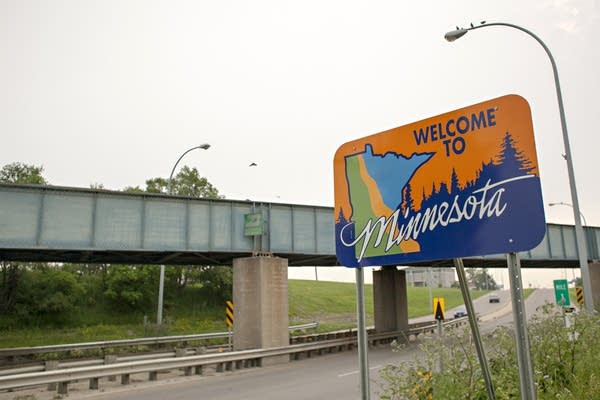In population chase, Minnesota fares better than most neighbors

Go Deeper.
Create an account or log in to save stories.
Like this?
Thanks for liking this story! We have added it to a list of your favorite stories.
Updated: 8:31 p.m.
Minnesota’s population moved in a positive direction in U.S. Census Bureau estimates released Monday, a precursor to a pivotal 2020 head count that will determine if the state retains eight seats in the U.S. House.
The estimates show Minnesota gained 33,383 people from July 2018 to July 2019, which is more than any of its neighbors and is among the strongest in the northern part of the country.
State Demographer Susan Brower said the pace of growth in Minnesota had waned. In the past three years, the state topped 40,000 in estimated additions to the population.
“We still are growing faster than many Midwestern states, Minnesota does OK for our corner of the U.S. but we are for 2019 slower than we were in 2017 and 2018,” she said.
Turn Up Your Support
MPR News helps you turn down the noise and build shared understanding. Turn up your support for this public resource and keep trusted journalism accessible to all.
By comparison for the prior year, Wisconsin gained 15,000 people, Iowa added 6,400, South Dakota grew by nearly 6,000 and North Dakota bumped up about 4,000 and Michigan ticked up 2,800. Illinois shed 51,000 people.
Minnesota’s growth came through vital events — there were 24,000 more births than deaths — and migration. The increase in people who moved in was almost entirely attributable to international migration rather than new people coming from other states.
Minnesota’s year-over-year estimated population change translates into a 0.6 percent uptick. Among Midwestern states, only South Dakota had a slightly higher percentage growth at 0.7 percent on a smaller population base.
Population changes are being watched more closely than usual as the 2020 census arrives. That more-precise head count will determine whether Minnesota keeps its eight seats in Congress or surrenders one.
All of the states expected to gain seats had stronger estimated growth rate than Minnesota, and many added considerably more people overall. Kimball Brace of Election Data Services, which crunches the census data to project congressional delegation size, predicts Minnesota will lose a seat if the pattern holds.
But Minnesota fared better than other states on the cusp of losing a U.S. House member.
“It’s still looks to me like it’s very much within reach. It’s definitely not a shoo-in but it doesn’t look outside the realm of possibility,” Brower said. “It’s going to be close.”
According to the latest Census Bureau figures, Minnesota’s population went from about 5.3 million in 2010 to more than 5.6 million in mid-2019.
Dear reader,
The trustworthy and factual news you find here at MPR News relies on the generosity of readers like you.
Your donation ensures that our journalism remains available to all, connecting communities and facilitating better conversations for everyone.
Will you make a gift today to help keep this trusted new source accessible to all?




